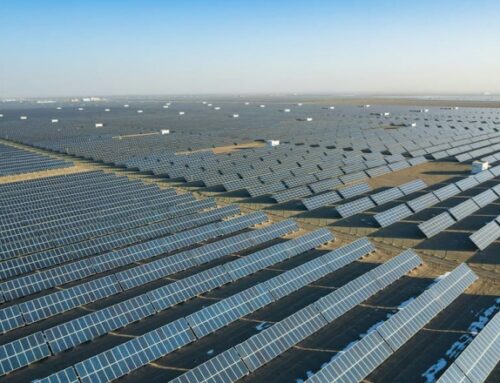Protecting the environment: A Mugglehead roundup
January 7, 2025
The environment has become a big concern for younger investors in recent years and rightfully so. Gold mining in particular comes with certain environmental costs—from the energy sources used in the expansive processes to pull the precious metal from the ground, to what’s done with the various reagents required to separate gold from the rest of the rock.
And it’s not like mining has such a stellar reputation, either.
Look no further than the Canadian Yukon, where the Eagle Mine has become a slow-moving environmental catastrophe with damage spread out over generations ever since the failure of a heap leach facility operated by Victoria Gold (OTCMKTS: VITFF) led to a landslide and cyanide leak in June of 2024.
Further, a 2021 report from the SkeenaWild Conservation Trust and the BC Mining Law Reform network identified 12 mines in B.C. that are either currently polluting or have a high potential to do so, eight of which are gold mines. They’re called the ‘dirty dozen.’
That’s why it’s important to pay attention to what companies are doing for remediation and reclamation. And it’s equally important to keep an eye out for companies that are taking active stances in protecting the land and the future generations who will live there with their practices, their processes and ultimately, their money.
Here are three mid-tier gold companies doing the work.

The Fekola Mine in Mali. Image via B2Gold.
B2Gold has opted for solar power instead of diesel
B2Gold Corp. (TSE: BTO) (NYSE AMERICAN: BTG) has made a commitment to environmental stewardship. It shows this through its investments in renewable energy projects and sustainable practices aimed at reducing greenhouse gas (GHG) emissions.
One of B2Gold’s flagship climate initiatives is the construction and operation of a 7 MW solar power plant at the Otjikoto Mine in Namibia. This solar facility significantly offsets the mine’s reliance on diesel generators, resulting in reduced carbon emissions and lower operational costs. By harnessing solar energy, B2Gold has displayed how renewable energy can be effectively integrated into mining operations, serving as a model for other companies in the industry.
In Mali, B2Gold has implemented energy efficiency measures at its Fekola Mine, which include exploring hybrid power solutions that combine solar, battery storage, and thermal energy. These efforts are part of a broader strategy to enhance energy efficiency while minimizing the environmental footprint of its mining activities.
The company’s approach to climate action extends beyond energy solutions. B2Gold actively engages with local communities to promote reforestation projects, land rehabilitation, and biodiversity conservation. These programs not only mitigate the environmental impact of mining but also contribute to the long-term sustainability of the regions in which the company operates.
It also keeps its reporting practices transparent, which is an underrated and thoroughly overlooked benefit when trying to do due diligence. The company publishes annual sustainability reports detailing its progress on environmental, social, and governance (ESG) goals, including its contributions to the global fight against climate change.
Through these initiatives, B2Gold demonstrates that gold mining can align with sustainability objectives, paving the way for a more climate-conscious industry.
Read more: Calibre Mining finds high grade gold mineralization outside of its Valentine Mine resource
Read more: The Best of 2024: A Mugglehead roundup

The northern lights give a natural lightshow over Agnico’s Meliadine project in Nunavut. Image via Agnico Eagle Mines.
Agnico Eagle Mines has lowered emissions with hydroelectric
Agnico Eagle Mines Limited (TSE: AEM) (NYSE: AEM) has also taken significant steps to address climate change through innovative energy solutions and sustainability initiatives.
The company has embraced renewable energy and efficiency improvements as central to its operations, which demonstrates a strong commitment to reducing GHG emissions and environmental impacts.
One such project in Quebec uses hydroelectric power.
Beyond the purely environmental angle, the company has dramatically reduced its dependence on fossil fuels by using clean energy sources. This contributes to both lowering emissions and also provides some long-term benefits to the company’s bottom line in terms of power savings. This approach shows off the potential for mining operations to integrate renewable energy in regions where resources allow.
Meanwhile up north in Nunavut, Agnico Eagle is busy conducting wind power feasibility studies to further diversify its energy portfolio.
These studies aim to determine the viability of harnessing Arctic wind resources to power its mines. This could lead to groundbreaking applications of renewable energy in remote and challenging environments. The potential success of these efforts would set a precedent for the broader mining industry.
Beyond energy, the company prioritizes land rehabilitation and biodiversity conservation. For example, Agnico Eagle’s reclamation efforts focus on restoring ecosystems affected by mining activities. These projects enhance the ecological value of previously mined areas while fostering positive relationships with local communities.
The company’s sustainability reporting reflects its proactive approach. Agnico also values transparency and keeps stakeholders informed and engaged.
Agnico Eagle’s dedication to integrating sustainable practices into its operations exemplifies the balance between resource extraction and environmental responsibility. Further, it sets a standard for the industry to follow.
Read more: High grades in Nicaragua expected to raise Calibre Mining’s mineral resource
Read more: Calibre Mining shuffles strength into its board for future growth

Calibre Mining raises a rig in Nicaragua. Image via Calibre Mining.
Calibre Mining keeps sustainability commitments in three separate countries
Calibre Mining Corp. (TSE: CXB) (OTMRKTS: CXBMF) has established itself as a leader in ESG practices, with a strong focus on addressing climate change.
One of the main ways it’s accomplished this is by creating a comprehensive framework for evaluating risks, setting goals, and measuring performance. It’s published this rubric for this year in its inaugural Climate Change Report.
This report builds on years of aligning operations with global standards, such as the World Gold Council’s Responsible Gold Mining Principles and the Mining Association of Canada’s Towards Sustainable Mining program.
Calibre’s approach integrates global sustainability standards with tailored local solutions across its diverse operations in Newfoundland, Nevada, and Nicaragua.
The company operates the Valentine Gold Mine in Newfoundland, Canada, where it addresses the risks of extreme weather, including potential spring floods caused by early snowmelts.
Meanwhile, in Nevada’s high desert, home to the Pan Gold Mine, measures to combat regional droughts include enhanced water conservation and recycling systems. Additionally, the company has taken a stand against wildfires by maintaining cleared zones and the using advanced lightning detection systems.
Furthermore, Calibre operates multiple sites in Nicaragua where it focuses on mitigating tropical storm impacts. At the La Libertad Complex, the company employs diversion channels and maintains substantial supplies to safeguard operations from flooding. Similarly, rising temperatures at the El Limon Complex have prompted investments in improved mine ventilation and alternative water sources.
Calibre is also advancing renewable energy adoption, exploring solar and wind power to support a low-carbon transition.
.
Calibre Mining is a sponsor of Mugglehead news coverage
.
joseph@mugglehead.com
Search
RECENT PRESS RELEASES
Related Post


